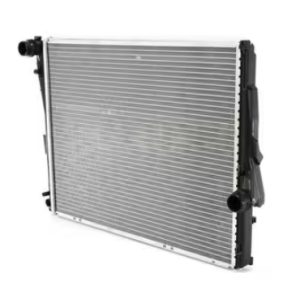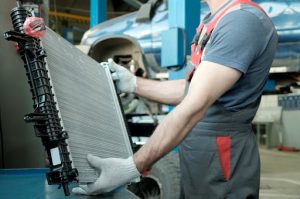In high-performance automotive engineering, keeping engine temperatures in check is not just beneficial — it’s essential. Radiators, as core components of the cooling system, ensure your engine stays within optimal thermal limits, especially during intense operation. Two of the most widely used materials in radiator construction are aluminum and copper. Each offers unique advantages and trade-offs, sparking ongoing debate among racers, tuners, and performance engineers.
This article provides a detailed comparison of aluminum and copper radiators to help you determine which one best suits your high-performance vehicle.
The Role of Radiators in High-Performance Vehicles

Radiators function as heat exchangers, cooling down the hot engine coolant by transferring that heat to the air. The effectiveness of this process can significantly impact engine performance, longevity, and reliability — especially under racing or high-load conditions. Choosing the right radiator material can enhance the efficiency of this process.
Material Properties Comparison
| Feature | Aluminum Radiators | Copper Radiators |
|---|---|---|
| Thermal Conductivity | Moderate (approx. 205 W/m·K) | High (approx. 401 W/m·K) |
| Weight | Lightweight | Significantly heavier |
| Corrosion Resistance | Excellent (with proper coatings) | Moderate; prone to corrosion |
| Durability | High, especially under pressure | Lower under vibration |
| Ease of Manufacturing | Easier to weld and shape | Brittle; harder to shape |
| Cost | Generally lower | Generally higher |
Thermal Performance
On paper, copper’s high thermal conductivity makes it seem like the obvious choice — it transfers heat nearly twice as efficiently as aluminum. However, real-world performance depends on factors like fin design, airflow, and tube size, where aluminum radiators often close the gap.
Advantages of copper radiators:
-
Better heat transfer per surface area
-
Faster heat dissipation
Limitations:
-
Heavier mass may offset thermal advantage
-
Prone to corrosion and fatigue over time
Weight Considerations
For performance vehicles, weight reduction is key. Lighter components improve acceleration, braking, and overall handling.
Aluminum radiators:
-
Up to 40% lighter than copper
-
Contribute to a better weight distribution and handling
-
Ideal for racing and performance builds
Copper radiators:
-
Heavier construction adds load to the front end
-
May negatively affect vehicle dynamics
Durability and Maintenance
Aluminum radiators are typically TIG-welded, offering superior strength under high pressure and vibration — common in racing conditions. Copper-brass radiators are soldered, which can weaken over time.
| Factor | Aluminum Radiators | Copper Radiators |
|---|---|---|
| Corrosion Resistance | High (anodized or coated) | Moderate (can corrode internally) |
| Leak Resistance | Strong welded joints | Solder joints may crack or fail |
| Maintenance Requirements | Low | Requires periodic checks |
Repairability and Cost

While aluminum radiators are generally more affordable upfront, they’re harder to repair once damaged. Copper radiators are easier to repair due to their soldered construction, but require more frequent maintenance.
Aluminum:
-
Cheaper to manufacture and buy
-
Less repairable, often replaced if damaged
Copper:
-
More expensive
-
Easier to fix (resoldering possible)
Use-Case Recommendations
| Application | Recommended Material |
|---|---|
| Track/Race Cars | Aluminum |
| Street Performance Builds | Aluminum |
| Classic Car Restorations | Copper (authenticity) |
| Heavy-Duty or Towing Vehicles | Copper (thermal efficiency) |
| Daily Driving | Aluminum |
Pros and Cons Summary
Aluminum Radiators
Pros:
-
Lightweight
-
Durable under pressure and vibration
-
Resistant to corrosion
-
Affordable and widely available
Cons:
-
Lower thermal conductivity
-
Difficult to repair
Copper Radiators
Pros:
-
Superior heat transfer
-
Easy to repair
-
Traditional and reliable
Cons:
-
Heavier
-
Prone to corrosion
-
Higher initial cost
Where to Buy Radiator & Components Online
When upgrading or replacing your radiator, quality is just as important as material. For a reliable selection of both aluminum and copper radiators, as well as other cooling components, check out this trusted source:
Buy Radiator & Components online
Final Thoughts
Both aluminum and copper radiators have a place in the high-performance vehicle world. If your goal is maximum heat dissipation with easy repair, copper is still a viable option—especially in restoration or heavy-duty contexts. However, for most modern high-performance applications, aluminum radiators are the superior choice due to their weight advantage, durability, and modern manufacturing.
Ultimately, the best choice comes down to your specific needs, budget, and how you plan to use your vehicle. Whether you’re racing on the track or building a fast, street-legal machine, selecting the right radiator will help ensure your engine performs at its best.
Ready to upgrade?
Buy Radiator & Components online